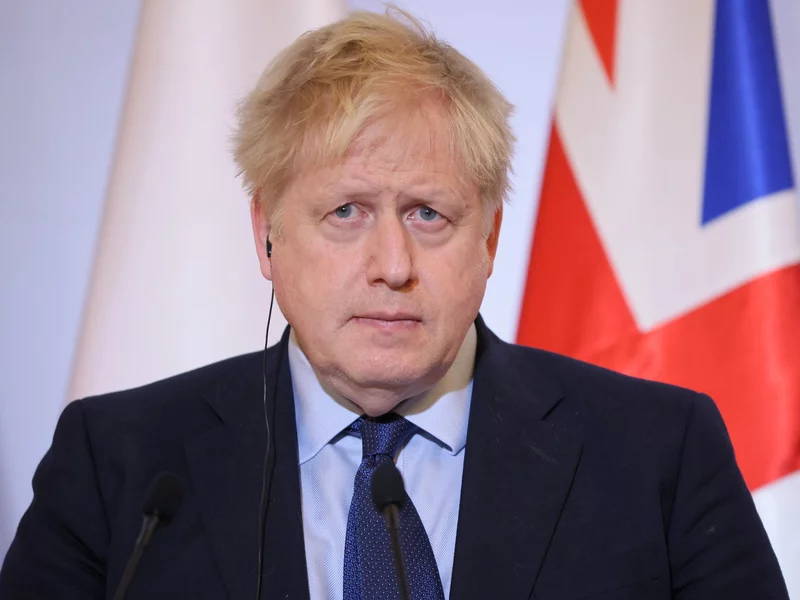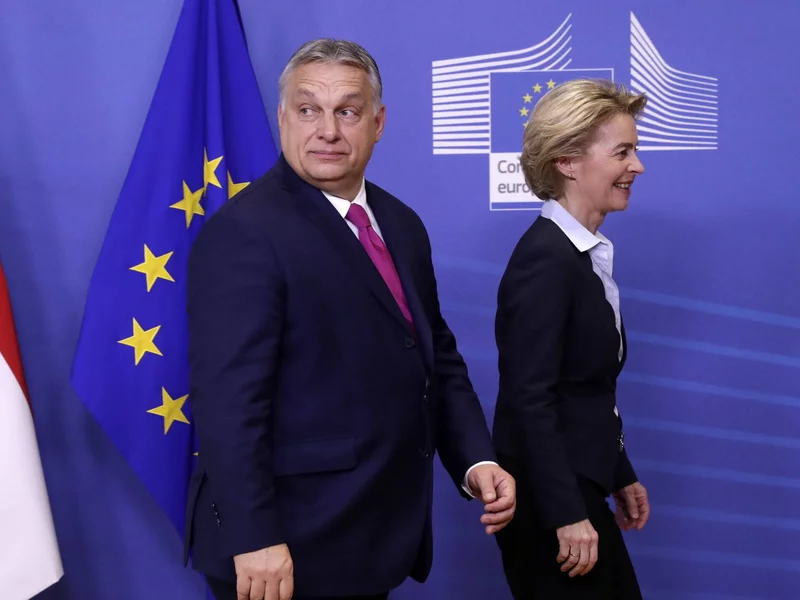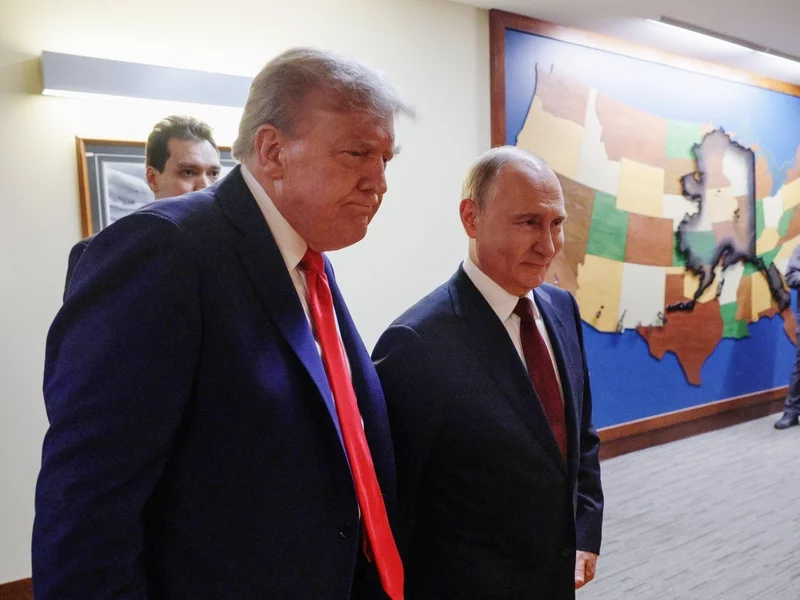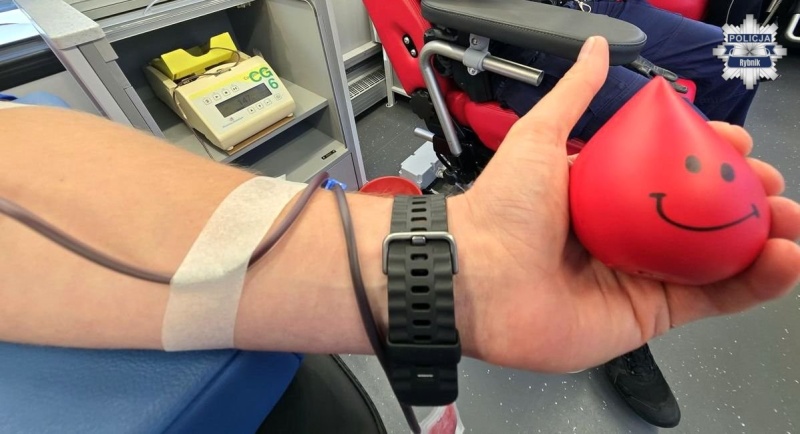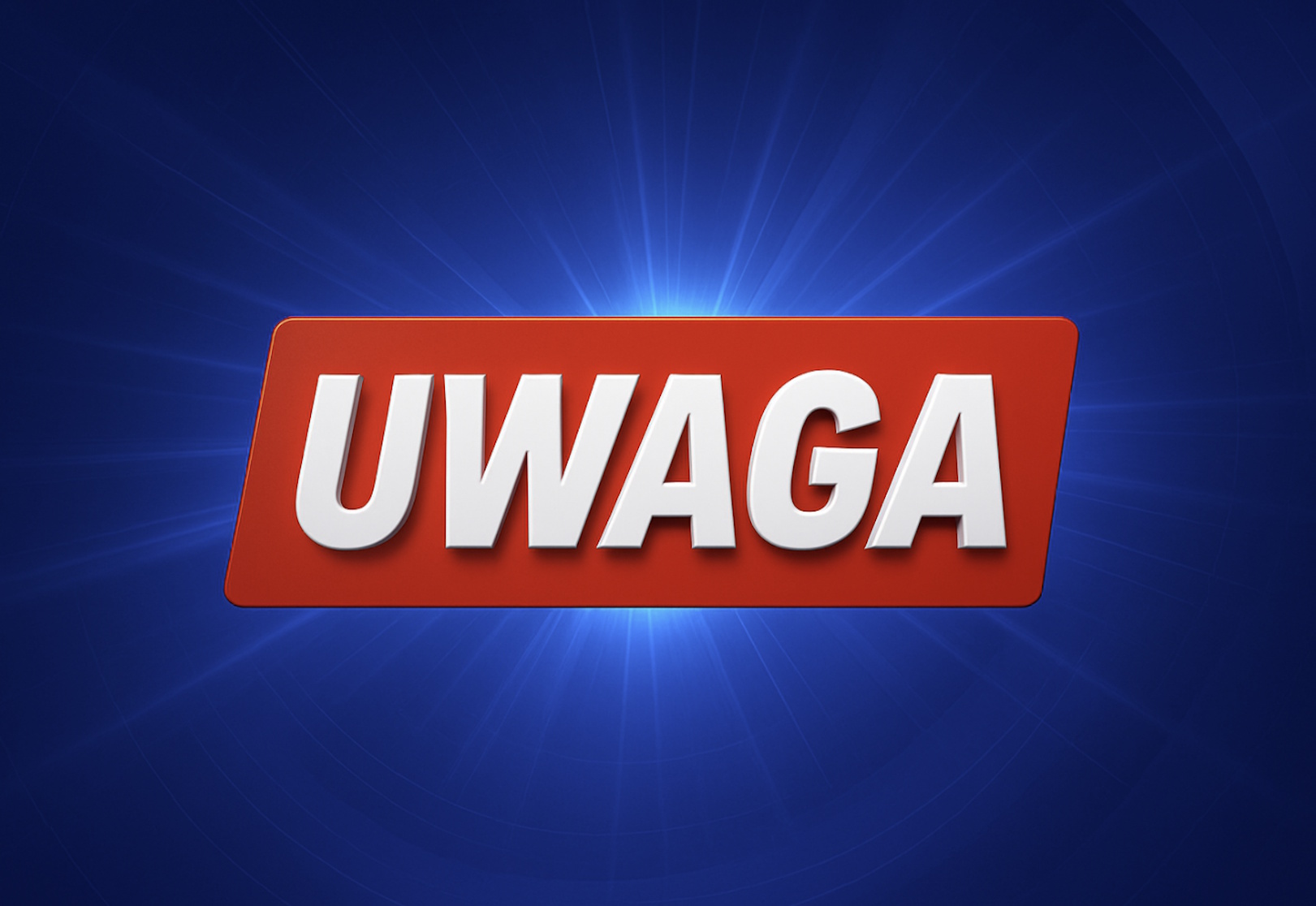
Futures, Dollar Slide As Trump Renews Tariff Threats, Middle East Tensions Spike
Stock futures, bond yields and the dollar are all lower after Trump ramped trade war tensions back up saying he wants to set unilateral tariff rates higher/reimpose higher duties within the next two weeks to on several countries before the July 9th deadline while Bessent floated extensions for countries negotiating in „good faith.” Market jitters also intensified amid heightened tensions in the Middle East, with speculation that Israel may attack Iran sending oil surging. As of 8:00am, S&P 500 futures were down 0.6%, near session lows, putting the benchmark on track for its first back-to-back loss in three weeks as the S&P fails to hold the 6k level despite a dovish CPI and a strong 10Y auction. According to JPM, „the combination of a disappointing US/China deal (so far), higher oil prices (new geopolitical risk unlocked), and the inability of MegaCap Tech to hold gains (profit taking as we approach ATHs) seems to be the combination that reversed stocks lower.” Nasdaq 100 futures are down 0.5% with Mag7/Semis weaker; ORCL rose 7% after projecting cloud infrastructure sales will jump more than 70% in the current fiscal year, while Boeing shares tumbled 8% after an Air India Boeing 787 traveling from Ahmedabad in India to London’s Gatwick airport crashed shortly after taking off, in what was the most serious accident involving the US planemaker’s most advanced widebody airliner. . Small caps are underperforming as the yield curve bull flattens. The USD is lower (new 52-wk low) and commodities are selling off with natgas and gold the bright spots. Today’s macro focus is PPI while a 30-year Treasury auction at 1pm ET will provide a key test of sentiment, given concerns about mounting deficits and the cost of Trump’s signature tax bill.
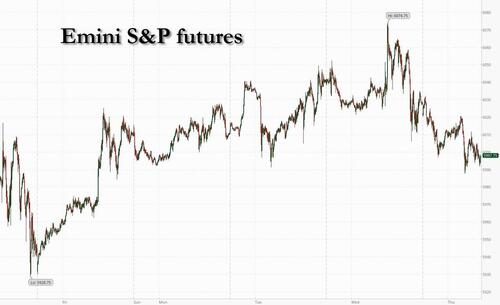
In premarket trading, the Magnificent Seven stocks are mixed (Microsoft +0.4%, Apple +0.1%, Amazon -0.4%, Alphabet -0.7%, Meta Platforms -0.5%, Nvidia -1.1%, Tesla -2%). Boeing tumbled 7% after a 787 Dreamliner aircraft operated by Air India crashed shortly after taking off in Ahmedabad, with 242 passengers and crew on board, and no reports of survivors. Here are some other notable premarket movers:
- CureVac NV soars 30% after BioNTech SE (BNTX) agreed to buy the former Covid vaccine rival for about $1.25 billion
- Dana rise 3% after the drivetrain supplier said it will sell its off-highway business to Allison Transmission for $2.7 billion.
- GameStop Corp. falls 14% on plans to offer $1.75 billion worth of convertible bonds, which would make the video-game retailer one of the year’s biggest issuers of the equity-linked securities.
- Oklo declines 6% as the small-reactor developer is seeking to raise as much as $400 million in a secondary share offering.
- Oracle rises 8% after projecting cloud infrastructure sales will jump more than 70% in the current fiscal year, boosting investor enthusiasm for the closely watched business.
- Oxford Industries falls 10% after the owner of the Tommy Bahama apparel brand slashed its profit forecast for the fiscal year.
US President Donald Trump ratcheted up trade uncertainty with remarks that he intends to impose unilateral tariffs on dozens of trading partners in the coming weeks. Separately, market jitters intensified amid heightened tensions in the Middle East. The cautious mood is stalling a rebound in US equities that had brought the S&P 500 within reach of its all-time high, even as questions persist over the economic impact of Trump’s trade agenda. Resilient earnings and limited economic fallout have supported the rally so far, but traders are questioning how much further the gains can stretch. Meanwhile, uncertainty is set to endure and stock valuations are already lofty, according to Howard Marks. With that backdrop, traders are probably going to be treading water for a while longer.
Still, while Trump’s comments about unilateral tariffs add to the trade war noise, it’s unclear if he will follow through. The president has often set two-week deadlines for actions, only for them to come later or not at all. Japan’s Prime Minister Shigeru Ishiba was said to see a large gap between the US and Japanese stances on tariffs before this weekend’s key G7 meeting in Canada.
“There’s a resistance at this point to really add a lot of risk,” Alastair Pinder, global equity strategist at HSBC Holdings Plc, told Bloomberg TV. “The reason for that is because people think that this tariffs are going to hit growth at some point in the future.”
Sentiment was also dented by an uncertain geopolitical situation in the Middle East after CBS reported that US officials have been told that Israel is fully prepared to launch an operation into Iran/US ordered some staff in Baghdad embassy to evacuate after Iran threatened to strike American bases in Middle East over its nuclear program.
Elsewhere, Thursday’s 30-year Treasury auction will provide a fresh gauge of investor appetite for long-dated debt amid concerns that mounting deficits are dampening demand. The sale comes as Congress debates Trump’s signature tax legislation, which some estimates suggest could add trillions of dollars to the US budget shortfall, potentially requiring increased bond issuance to fund the deficit.
“We know that Trump is watching these auctions closely, so investors will want to wait to see if there’s any reaction from him if the results don’t turn out well,” said Benoit Peloille, chief investment officer at Natixis Wealth Management.
In Europe, the Stoxx 600 fell 0.8% amid a broader risk-off theme after President Donald Trump said he intended to send letters to trading partners in the next one to two weeks setting unilateral tariff rates. European mining shares and airline stocks are among the worst performers in Europe, while energy shares outperform. Among individual stocks, Tesco gains after the UK food retailer’s sales increased more than expected. Here are the most notable movers:
- BE Semiconductor shares soar as much as 11% to the highest levels since January, after the chip equipment maker raised its long-term revenue and margin outlook ahead of its investor day.
- Tesco gains as much as 2.2% after delivering stronger UK like-for-like sales growth than expected in the first quarter.
- Oracle shares rise as much as 8.3% in premarket trading on Thursday after the software company reported fourth-quarter results that beat expectations as demand for AI infrastructure remains strong.
- Clas Ohlson rises as much as 15%, setting a new record high, following the Swedish retail group’s fourth-quarter results.
- Halma shares jump as much as 10% to hit a new all-time high after the safety technology group posted annual results ahead of expectations.
- Paypoint shares rise as much as 5.5% after the payment service provider said it expects to deliver £100m Ebitda by the end of fiscal 2026. Panmure Liberum notes strength in parcels and digital payments.
- LPP gains as much as 5.3% as Poland’s biggest fashion retailer reported stronger-than-expected earnings in 1Q ended April 30, driven by strict cost control.
- Airline stocks fall and are among the worst performers in Europe, after US peers suffered sharp drops on Wednesday when data showed airfares slippping for the fourth straight month.
- European mining shares are among the worst-performing sectors in the Stoxx 600 benchmark as iron ore falls after US President Donald Trump said he will tell trading partners their tariff rates within two weeks.
- European insurance stocks decline as Barclays downgrades its sector view to neutral, saying valuations are relatively full while the scope for earnings surprises is running out of steam.
- Cerillion shares fall as much as 17%, set for their steepest one-day drop, as the CEO and biggest holder in the IT service firm unveiled plans to sell 1.3 million shares in a discounted secondary placing.
- Thule drops as much as 4.6% following a downgrade to hold at DNB Carnegie, which sees risk/reward for the Swedish outdoor equipment maker as broadly neutral.
Earlier in the session, Asian stocks fluctuated, as investors fretted over US President Donald Trump’s pledge to announce unilateral tariff rates for major trading partners within two weeks. The MSCI Asia Pacific Index swung between a 0.3% gain and a 0.2% loss after rising for three straight days to its highest level since November 2021. TSMC and Alibaba were the biggest drags on the gauge, while Mitsubishi Heavy provided the biggest boost. Markets in the region were mixed, with Taiwan, Japan and Hong Kong falling while South Korea extended its post-election gains. The MSCI China Index was down 1.1% in afternoon trading. The gauge entered a bull market Wednesday, up more than 20% from an April low, amid optimism that Sino-American tensions will ease following the trade talks. The unpredictability of US trade policies continues to keep the market on edge, though volatility has declined. US President Donald Trump’s latest comments indicate nations will be notified of new levies ahead of the July 9 deadline he had previously set to reimpose higher duties on dozens of economies.
In FX, the Bloomberg’s Dollar Spot Index fell as much as 0.5%, while the euro rises 0.9% against the greenback to the highest since November 2021. The Swiss franc is up 0.8% while the Japanese yen gains 0.6%. The pound is up 0.3% but lags regional peers after UK GDP fell more anticipated in April.
In rates, treasuries extend Wednesday’s gains, with yields lower by 4bp-5bp and at week’s lows, supported by wider gains in most European bond markets. US Treasury 10-year yields trade around 4.365%, down 5bps, with bunds and gilts outperforming by 1.5bp and 1bp in the sector. Front-end lags slightly, with 2-year yields down around 3.5bp on the day. Long-end gilts rallied after UK GDP, industrial and manufacturing data were slightly softer-than-expected. US session includes weekly jobless claims and PPI data and $22 billion 30-year bond reopening at 1pm New York time. 30-year bond sale concludes this week’s Treasury auction cycle. Wednesday’s 10-year note drew strong demand, stopping through by 0.7bp. WI 30-year yield is near 4.87%, about 5bp cheaper than last month’s result.
In commodities, WTI futures drop 1.5% to $67.10 a barrel after surging on Wednesday amid renewed Iran tensions; spot gold rises $11 to around $3,366/oz.
US economic data slate includes May PPI and weekly jobless claims (8:30am) and 1Q household change in net worth (12pm).
Market Snapshot
- S&P 500 mini -0.4%
- Nasdaq 100 mini -0.4%
- Russell 2000 mini -0.8%
- Stoxx Europe 600 -0.6%
- DAX -1%, CAC 40 -0.5%
- 10-year Treasury yield -2 basis points at 4.4%
- VIX +1.1 points at 18.34
- Bloomberg Dollar Index -0.4% at 1202.28
- euro +0.6% at $1.156
- WTI crude -1.1% at $67.38/barrel
Top Overnight News
- An Air India Boeing 787 (BA -7.5%) traveling from Ahmedabad to London’s Gatwick airport with 242 people on board crashed shortly after takeoff and exploded on impact. Flight AI171 reached an altitude of 625 feet, according to Flightradar24. Boeing shares slumped premarket. BBG
- Israel is considering taking military action against Iran — most likely without U.S. support — in the coming days, even as President Donald Trump is in advanced discussions with Tehran about a diplomatic deal to curtail its nuclear program. NBC
- China’s chokehold on supplies of minerals essential to high-tech goods from electric vehicles to jet fighters has become a formidable advantage in trade negotiations with the U.S. They are keeping rare earths on a very tight leash, agreeing only to export licenses for 6-month terms to retain negotiating leverage against Washington. WSJ
- If the U.S. continues to impose AI semiconductor restrictions on China, then chipmaker Huawei will take advantage of its position in the world’s second-largest economy, Nvidia CEO Jensen Huang told CNBC Thursday. CNBC
- GOP senators emerged from the meeting on Trump’s big bill but details are lacking on how tax overhaul and Medicaid cuts would be structured, while it was indicated that changes would be made to pare back SNAP provisions to lessen burden on states and the SALT cap is likely to be reduced: CNN
- Japanese PM Ishiba still sees distance with the US when it comes to trade talks, according to an opposition party leader who met with the leader to discuss US tariffs. Ishiba says there is a large gap between the US and Japanese stances, and that he doesn’t have a particular timeline in mind for when the two sides may come to an agreement. BBG
- Russian forces ate into more Ukrainian territory in May than in almost any month since the end of 2022, as the Kremlin presses a summer offensive to create the impression in the West that victory is within its grasp. WSJ
- UK reported relatively soft April data, with shortfalls in monthly GDP and industrial/manufacturing production. RTRS
- Trump said he intended to send letters to trading partners in the next one to two weeks setting unilateral tariff rates, ahead of a July 9 deadline to reimpose higher duties on dozens of economies. BBG
- Senator Ted Cruz pitched Republican senators Wednesday on ending the Federal Reserve’s authority to pay interest to banks, claiming it would save $1.1 trillion over a decade, with members of the party’s conservative flank lauding the idea. BBG
- Manhattan apartment rents hit another record in May, the third in four months. Demand may surge further as lease expirations and an influx of new graduates tighten the market.
Tariffs/Trade
- US President Trump said he would be willing to extend the trade talks deadline but doesn’t think it will be necessary, while he added they are dealing with Japan and South Korea on trade. Trump also stated at a certain point, they will send letters out for countries to take or leave and will send those letters out in a week and a half. Furthermore, he said the EU wants to negotiate and will weigh in again in a week if he’s satisfied.
- Chinese Foreign Ministry says the nation will always honour its commitments when commenting on US President Trump’s remarks that a deal with China is „done”
- US President Trump is expected to sign off on key components of the US/UK trade deal, according to FT; relating to the „cars for agriculture” deal. Officials cited by the FT say negotiations are ongoing on delivering tariff-free entry for UK steelmakers
A more detailed look at global markets courtesy of Newsquawk
APAC stocks traded mixed following the subdued handover from Wall St where the major indices were choppy and wiped out initial data-driven gains as geopolitical concerns clouded over risk sentiment. ASX 200 was initially led higher by strength in energy and gold miners after the recent rallies in their respective underlying commodity prices, although the gains in the broader market were limited and the index eventually returned to flat territory. Nikkei 225 underperformed as exporters suffered the ill effects of the recent currency strength. Hang Seng and Shanghai Comp were mixed alongside a similar overall picture across the Asia-Pac region and with markets somewhat unimpressed following the lack of solid details from the recent US-China agreement.
Top Asian News
- Toho Titanium Co. shares surged 16% after parent JX Advanced Metals Corp. said it’s considering ways to unwind the listing of the titanium unit as Japan’s complex system of subsidiaries comes under scrutiny.
- Asian Paints’ shares gain as much as 2.5% as 35 million shares of the company changed hands in a single block trade on the NSE, removing concerns of large supply of the stock on the counter in the near term.
- Paytm’s shares slump in early trading in Mumbai after India’s finance ministry says it has no proposal to allow merchant fees on digital transactions, a move that impacts the company’s potential for such revenue generation.
- Cettire shares slide after the online fashion retailer said it’s facing ongoing challenges in the global luxury market, intensified by US tariff policies.
- Shares of Thailand’s Siam Cement advance 3% after the company said its unit is preparing to reduce stake in Indonesia’s Chandra Asri Pacific.
- Sino Biopharmaceutical shares soar 19%, as the Chinese drugmaker says a “landmark out-licensing deal” may be finalized in the near future, according to a WeChat statement.
- Industrial Securities shares fall 4.8% in Shanghai after the company says its controlling shareholder, the Fujian provincial finance department, isn’t planning any merger for the Chinese brokerage, according to a statement to the Shanghai stock exchange.
- Sumitomo Pharma shares surge by their daily limit of 17%, or by ¥150 yen, after Daiwa Securities raised its rating on the Japanese drugmaker citing growing sales of existing products to help fund new research.
European bourses are very much on the backfoot, in a catch-up play to some of the losses seen late in the US session; EuroStoxx 50 -1.0%. Newsflow focussed on trade and geopols. Sectors are mostly negative given this, with the exception of Energy (+0.4%), given the rally in crude seen on Wednesday; a narrative which is cushioning the FTSE 100 -0.2%. At the other end of the spectrum, Travel & Leisure (-2.4%) lags given recent gains in energy prices and with focus on Boeing (-7.5%) after the Air India crash.
Top European News
- NBP’s Kotecki says rates could be lowered in July, via ISBNews; end of 2025 main rate could fall to 4.75%, perhaps to 4.5% if projection in November shows lower inflation path.
- ECB’s Villeroy says a 5.4% budget deficit in 2025 remains in reach, even with lowering forecasts.
- ECB’s Simkus says rates may still have to come down as risk has increased that inflation will be below projections; ECB has arrived at the neutral rate.
- ECB’s Patsalides says the ECB is flexible and agile on rates.
- ECB’s Schnabel (Hawk) says the monetary policy cycle is coming to an end, growth outlook is broadly stable despite the trade conflict; financing conditions are no longer restrictive. Medium term inflation stabilises at the target. Medium term inflation stabilises at the target. EZ Headline inflation will ease further in Q1 2026, due to energy price base effect, return to 2% over the medium term.
FX
- DXY has for the most part been in the red. Losses were modest in the early morning, and indeed the DXY briefly made a foray into positive territory testing 98.50 to the upside. However, the general direction of travel remains lower after CPI and the unilateral tariff comments from Trump. DXY has slipped onto a 97 handle and is now eyeing the YTD trough @ 97.92
- CHF and JPY the current outperformers. As the risk tone deteriorates and geopolitical tensions in the Middle East escalate after Iran was judged to be in violation of IAEA rules, paving the way for a return to sanctions. USD/CHF slumped as reporting around from Iran around „potential Israel attack” emerged, at a 0.8140 low. Similarly, USD/JPY at lows of 143.58, driven by the same factors and ahead of a busy week for Japan.
- GBP faded initial gains in the wake of disappointing UK GDP metrics. Cable hit an overnight high at 1.3593 before slipping into the red and to a 1.3524 low post-data. Action which has helped to support the EUR, as EUR/GBP peaks at 0.8519 just shy of 0.8522 from May 8th. In recent trade, as the USD gave ground, Cable has moved back into the green.
- EUR/USD is on the front foot and continuing to climb, at a new YTD peak at 1.1587 as traders seek a liquid alternative to the USD. Numerous ECB speakers so far and scheduled for the day ahead, though none have moved the dial just yet.
- Antipodeans initially softer, following the soft risk tone before moving higher as the dollar lost ground. AUD/USD Is now back on a 0.65 handle.
- PBoC set USD/CNY mid-point at 7.1803 vs exp. 7.1703 (Prev. 7.1815).
Fixed Income
- Gilts outperform on soft growth data, a release which has caused markets to once again imply two more 25bps cuts by the BoE in 2025. Though, some caveats to the release around frontloading due to US tariffs and UK stamp duty changes do apply. As high as 93.13, eclipsing Tuesday’s 92.87 best (after a dovish labour report), to a fresh WTD peak.
- Bunds were contained overnight, holding around the 130.97 peak seen after US CPI. Since, despite a very brief bout of pressure early doors, the bullish direction has resumed lifting Bunds to a 131.40 peak and counting given the risk tone and potentially in sympathy with Gilts. If breached Bunds then look to 131.47 from June 5th before 131.50 from the week of May 9th.
- USTs an echo of the above, though are comparably more contained as we count down to the afternoon’s PPI data for further insight into the inflation picture and how it squares with the dovish CPI report. At a 110-29 peak, near-enough matching 110-29+ from June 6th. Yields began mixed but have come under growing pressure as the benchmark itself lifts, with a modest flattening bias emerging but 2s30s remains in proximity to the steepest points seen post-CPI.
Commodities
- Crude benchmarks on the backfoot, benchmarks posting downside in excess of USD 1.00/bbl and at lows of USD 67.03/bbl and USD 68.64/bbl for WTI and Brent respectively; pressure which comes as a modest pullback from the upside seen on Wednesday. The main headline-driver this morning has been geopols, as the IAEA board voted to censure Iran over violations to the nuclear commitment. A decision which has sparked increasingly escalatory rhetoric over the morning.
- However, geopols have not spurred too much action so far for crude, given the gains seen on Tuesday, Trump’s tariff rhetoric, ongoing OPEC+ action and the lack of specificity on what the Iranian response will be.
- As it stands, we await details on Iran’s full response (they have confirmed a new enrichment site so far), how Israel and others will respond and if the 6th round of talks between the US and Iran will occur on Sunday, June 15th as scheduled.
- Spot gold is firmer on the session. However, price action has seen significant whipsawing as XAU got slammed to a USD 3338/oz trough in the early European morning, with no clear driver aside from a pickup in the USD at the time. Since, the yellow metal has been climbing and is comfortably in the green and at a USD 3377/oz peak, moving alongside other havens as the geopolitical tone intensifies.
- Specifics for base metals a little light aside from broader updates on trade and those impacting the risk tone as discussed.
- US Energy Secretary Wright and Secretary of the Interior of Burgum joined Japan’s JERA and US energy producers to finalise agreements expected to add over USD 200bln to US GDP. It was also reported that Energy Secretary Wright said a US oil output drop in 2026 is unlikely and sees a multi-year process for refilling the SPR, while he anticipates repairs to the SPR will be completed by the end of the year.
- Japan is reportedly concluding plans to conduct an auction for tax-free „minimum access” import rice, during June, via NHK.
Geopolitics
- Iran International posted „The sixth round of Iran-US talks had been tentatively scheduled for this weekend in Oman but it looked increasingly unlikely that the talks would happen, The Washington Post reported on Wednesday citing two US officials”. However, it was reported that US envoy Witkoff is to meet with Iran’s Foreign Minister Araghchi in Muscat on Sunday to discuss Iran’s response to the US proposal for a nuclear deal, according to a senior US official cited by Axios’s Ravid.
- Sources cited by The Washington Post noted that US intelligence officials are increasingly concerned about the fear of Israel striking Iran without Washington’s approval, according to Al Jazeera.
- US President Trump responded you are going to have to figure that out, when asked why people were being asked to leave the Middle East.
- US officials were told that Israel is fully ready for Iran operation, according to CBS.
- Senior Iranian Official says the nation will not abandon its right to Uranium enrichment; a „friendly” country in the region has alerted Tehran about a potential Israel attack.
- IAEA Board of Governors has passed the resolution declaring Iran as being in non-compliance with nuclear safeguards. Iran condemns the IAEA resolution, says it is a political decision without technical or legal foundations; no other choice than to respond to the IAEA resolution. Will launch a new enrichment site in a safe zone; additional countermeasures are being planned and will announced later.
- IAEA report says Iran conducted undeclared nuclear activities at 4 sites: Turquzabad, Mariwan, Pharmin and Lavisan Xi’an, according to Sky News Arabia
- Israeli Minister of Strategic Affairs and Mossad director will travel to meet US envoy Whitkov ahead of the round of nuclear negotiations with Iran scheduled for Sunday, via Israeli media cited by Sky News Arabia.
- US Embassy in Israel restricts travel for staff and families.
- Israel Foreign Ministry says the international community must respond to Iran’s non-compliance and take measures to prevent it from developing nuclear weapons.
- Journalist Stein says „Western diplomats tell i24NEWS: They are concerned about a meltdown between the two countries.” (Iran and Israel).
- Iraqi Military says the US evacuation decision has nothing to do with the presence of any field security indicators in the territory. Intelligence and field reports do not indicate actual threats. Additionally, US embassy in Bahrain says reports that the embassy has changed its posture in any way are false; staffing and operations are unchanged, activities continue as normal.
US Event Calendar
- 8:30 am: May PPI Final Demand MoM, est. 0.2%, prior -0.5%
- 8:30 am: May PPI Ex Food and Energy MoM, est. 0.3%, prior -0.4%
- 8:30 am: May PPI Final Demand YoY, est. 2.6%, prior 2.4%
- 8:30 am: May PPI Ex Food and Energy YoY, est. 3.1%, prior 3.1%
- 8:30 am: Jun 7 Initial Jobless Claims, est. 242k, prior 247k
- 8:30 am: May 31 Continuing Claims, est. 1910k, prior 1904k
DB’s Jim Reid concludes the overnight wrap
Happy birthday to me for today. All through my life I’ve looked quite old. I genuinely think though that my actual age is catching up to how old I look. Probably as being bald at 51 doesn’t stand out as much as starting to lose your hair in your early 20s! However as good as I feel, I have the knees of a 65 year old and the back of a 70 year old.
There were a few creaking joints in markets yesterday, as growing tensions in the Middle East saw Brent crude oil prices (+4.34%) post their biggest daily jump of 2025 so far, moving up to $69.77/bbl. That came as the US said they were pulling some staff from their Baghdad embassy, with fears mounting about an escalation between the US and Iran.
Sentiment wasn’t helped by various headlines, and CBS News reported that part of the reason for the US moving staff out of the Middle East was because US officials had been told that Israel was ready to launch an operation into Iran. The move also followed comments that President Trump made to the New York Post he was “less confident” about getting Iran to agree to end its nuclear program, and Iran’s defence minister warned that Tehran would target US bases if “conflict is imposed on us”. So after a strong start to the session, those headlines saw the S&P 500 (-0.27%) lose ground by the close, with futures this morning down another -0.34%.
Up to that point, things had looked more positive, as bonds and equities had been lifted by a downside US CPI print. Indeed, it was the 4th downside surprise in a row, which led to growing optimism that the tariff pass through to consumers might be smaller than originally feared. So that kept the prospect of Fed rate cuts firmly in play this year, which helped the 10yr Treasury yield came down -5.0bps on the day to 4.42%.
In terms of the details, the report showed US monthly headline CPI up by just +0.08% in May (vs. +0.2% expected), whilst core CPI was up +0.13% (vs. +0.3% expected). In fact, the core CPI print was beneath every economist’s estimate on Bloomberg, so it was a clear downside surprise that wasn’t expected at all. Investors were reassured by the lack of an obvious tariff impact, with core goods prices actually falling -0.04% in May. But if you dug deeper into the subcomponents there were a few initial signs of the tariffs, as toys (+1.35%) posted their strongest monthly jump in over 4 years, whilst major appliances (+4.31%) saw their biggest jump in almost 5 years.
With another soft inflation print, investors moved to price in more rate cuts from the Fed. Indeed, the amount of cuts priced by the December meeting rose +6.1bps on the day to 49bps, and overnight that’s since risen to 51bps. That also came as some of the inflation trendlines looked increasingly favourable. For example, if you take the last 3 months together, the annualised rate of headline CPI fell to just +1.0%, the weakest since July. Similarly for core CPI, the 3-month annualised rate was also down to +1.7%. So that was seen as raising the chance of rate cuts. In the meantime, there was also fresh pressure for cuts from the administration, as President Trump posted “CPI JUST OUT. GREAT NUMBERS! FED SHOULD LOWER ONE FULL POINT. WOULD PAY MUCH LESS INTEREST ON DEBT COMING DUE. SO IMPORTANT!!!” Shortly beforehand, Vice President JD Vance had also said that “the refusal by the Fed to cut rates is monetary malpractice.”
The other big story yesterday came from the US-China trade talks. In terms of what we know, Trump posted yesterday that “OUR DEAL WITH CHINA IS DONE, SUBJECT TO FINAL APPROVAL WITH PRESIDENT XI AND ME” and that the deal would see Beijing supplying rare earths and magnets “UP FRONT”, with the US in turn meeting its commitments, including on Chinese students using US universities. Trump also spoke of 55% tariffs on China, implying that the current combination of tariffs (10% baseline, 20% fentanyl-related and up to 25% from the 2018-19 tariffs) would continue. Meanwhile, the WSJ reported that China was putting a 6-month limit on new rare-earth export licences, in exchange for the US agreeing to relax its recent restrictions of the sale of products such as jet engines and ethane to China. So overall, this left a sense that the two sides had re-established the trade truce that was signaled in Geneva last month, but with the path forward towards any genuine trade normalisation still unclear.
In other trade news, we’re now less than four weeks away from the end of the 90-day extension to the reciprocal tariffs, which is set to run out on July 9. And yesterday President Trump said that the US was “going to be sending letters out in about a week and a half, two weeks, to countries, telling them what the deal is”. The US is still negotiating with several countries, and earlier in the day, Commerce Secretary Lutnick said the EU “will be probably the very, very end” of the trade deals that the US completes. Meanwhile, in a testimony to Congress, Treasury Secretary Bessent suggested there was no quid pro quo between US chip restrictions and China rare earths. Bessent’s other notable comment came on fiscal policy, saying that he wants to achieve a deficit ratio of below 4% by the end of Trump’s term. And after Bloomberg reported he might be in the running to become the next Fed Chair, Bessent also said he “would like to stay in my seat” at the Treasury to 2029.
For equities, the renewed geopolitical risks outweighed the good news on CPI, with the S&P 500 (-0.27%) ending a run of three consecutive increases. With little immediate sign that US chip restrictions were being lifted, the Magnificent 7 (-0.83%) underperformed, led by declines for Apple (-1.92%) and Amazon (-2.03%). And the VIX index of volatility inched +0.31pts higher to 17.26pts, having previously been on track to close at its lowest since February.
By contrast, Treasuries posted solid gains, aided by the CPI and a solid 10yr auction that saw $39bn of notes issued -0.7bps below the pre-sale yield. Collectively, that pushed the 2yr yield down -6.6ps on the day to 3.95%, while the 10yr yield was down -5.0bps to 4.42%. Meanwhile, the 30yr yield fell by a more modest -1.0bps to 4.92% ahead of today’s 30yr auction. And in turn, lower US rates saw the dollar index (-0.47%) fall to within half a percent of its lows in late April, and it’s now hovering just above that with another -0.26% decline overnight. That comes as Treasury yields have also extended their declines this morning, with the 10yr yield down another -1.4bps to 4.41%.
Overnight in Asia, markets have generally struggled to gain traction as they grapple with the uncertainty on tariffs and geopolitics. So the Nikkei (-0.56%) and the Hang Seng (-0.50%) have both lost ground, while the CSI 300 (+0.03%) and the Shanghai Comp (+0.07%) have only posted very modest increases. The main exception to that pattern has been South Korea’s KOSPI (+0.71%), which has posted a 7th consecutive gain this morning, leaving the index on track for its highest closing level since January 2022.
Earlier in Europe, both equities and bonds struggled as they failed to benefit from the US CPI boost. However, they also closed before the negative geopolitical headlines, so futures on the DAX this morning are down another -0.82%. Ahead of that however, the STOXX 600 (-0.27%) lost ground for a third consecutive session, with losses for the DAX (-0.16%), the CAC 40 (-0.36%) and the FTSE MIB (-0.07%) as well. And it was much the same story for rates, with yields on 10yr bunds (+1.1bps), OATs (+2.3bps) and BTPs (+1.0bps) all moving up.
Meanwhile in the UK, the government announced their Spending Review, where they set departmental budget allocations for the years ahead. This was more about the micro decisions, as the spending envelopes are set to grow broadly in line with the Spring Statement forecasts, with real-terms day-to-day spending rising by 1.8% next fiscal year and 1% over the remainder of the forecast horizon. So the next big fiscal question will lie in the Autumn Budget, which is slowly coming into view. Our UK economist has flagged how changes to market conditioning assumptions, a looser labour market, trade war, and potential downgrades to productivity could open up yet another fiscal hole – to the tune of £10-15bn. For more details on the spending review, see his latest blog here.
To the day ahead now, and data releases include the US PPI release for May, the weekly initial jobless claims, and UK GDP for April. Central bank speakers include the ECB Vice President de Guindos, as well as the ECB’s Schnabel, Muller, Escriva, Simkus, Knot, Panetta, and Patsalides. Finally, there’s a 30yr Treasury auction taking place.
Tyler Durden
Thu, 06/12/2025 – 08:21

